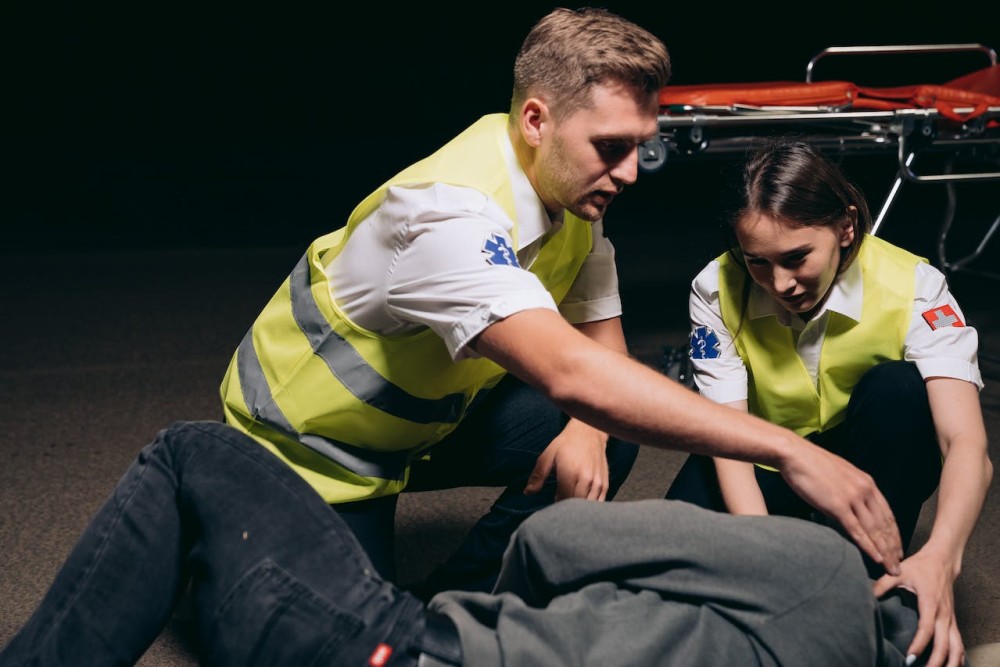
As a vital link to the “chain of survival,” emergency medical services (EMS) provide immediate medical care and interventions that can mean the difference between life and death. The time-sensitive care and highly coordinated response that EMS organizations offer to play a significant role in improving patient outcomes, making healthcare more accessible, and bolstering the public’s confidence in the healthcare system.
EMS providers also extend their services to non-emergency medical transportation (NEMT). With the assistance of NEMT dispatching software, they can transport non-emergency patients who nonetheless require medical supervision. These include people who have mobility issues and those who require specialized care while on the road. With the use of modern technologies, EMS dispatchers can keep accurate records, ease the burden of their staff members, and improve the efficiency of their operations.
Considering the important role that EMS providers have in their respective communities, it can come as a surprise that this essential service is fairly recent. Let’s take a look at how the concept of EMS came to be and the main events that shaped this service into what we know today.
How Did People Access Medical Care Before the Formation of EMS?
Prior to the formation of emergency medical services providers, it was a serious challenge to bring patients to medical facilities and professionals. In the old days, people typically relied on passed-down knowledge, home remedies, local healers, and the support of the community for medical care. There are places where religious and spiritual practices are intertwined with healing, and the people in these areas depend on their spiritual leaders for assistance. In communities where they are present, physicians see patients in their respective practices or conduct house calls. Back then, it was not unusual for people who were having health emergencies to travel on foot or use a cart or wagon to see a medical professional.
A Brief Look at the History of EMS
Conflicts played a significant role in the development of emergency medical services. World War I and II, in particular, advanced the development of EMS and the way medical care was provided both on and off the battlefield. These conflicts brought about innovations in medical treatment, transportation, and organization that laid the groundwork for modern EMS systems.
For instance, WWI saw the development of triage systems to prioritize care based on the severity of injuries, the widespread use of motorized ambulances for transporting wounded soldiers, and the practice of training non-medical personnel in basic first aid and life-saving techniques.
Significant advancements in medical procedures such as blood transfusions, surgical techniques, and the use of antibiotics took place in WWII. These developments not only saved lives on the battlefield but also had lasting impacts on civilian medicine and emergency care. This turbulent period also saw the deployment of specialized roles like medics and corpsmen in high-stress situations. The use of helicopters for medical evacuation also began during this time, allowing for faster transport of injured soldiers from the battlefield to medical facilities.
The concept of paramedics started emerging in the early 1960s. It was during this time that physicians and researchers strongly advocated for advanced medical training for ambulance crews. After this came the development of advanced life support (ALS) systems. At the same time, the public was also starting to become aware of the pressing need for standardized training and equipment for pre-hospital care. The Emergency Medical Service Systems Act of 1973 funded the creation of 300 EMS systems as well as the establishment of EMS training programs. This led to the continuous development of EMS technologies, training, and techniques over the years.
Currently, many EMS providers are focused on researching prehospital interventions for health issues such as cardiac arrest and acute respiratory distress that are commonly seen in emergency medicine. In addition, many agencies are also incorporating digital technologies and systems, such as ambulance software solutions, so that they can offer rapid responses while maximizing their limited resources and improving accessibility to care.
Who Are the Current Providers of Emergency Medical Services?
There are different models of providing public access to EMS. There are EMS providers that are linked to fire or police departments. This arrangement enables them to coordinate efficiently during emergencies, but it may also lead to competing priorities and varying levels of medical training among personnel. On the other hand, there are also EMS organizations that operate independently of the aforementioned departments. These organizations focus solely on pre-hospital medical care, where specialized training and expertise among EMS personnel are required.
The history of EMS is a testament to the vital role it plays in modern healthcare. EMS providers and proponents have clearly covered a lot of ground since the system’s inception. And still, there’s much to look forward to in the future. The integration of digital technologies in providing emergency medical interventions and organizing dispatches will make a difference in the lives of patients and the way EMS is carried out in the coming years.
